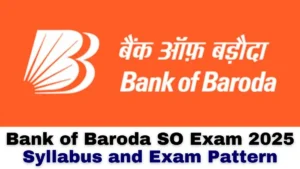Dear Readers,
Just a few days are left for SBI PO and NIACL Assistant Examination. It is time to pace up your preparation for SBI PO Prelims and NIACL Assistant Prelims 2017. These Reasoning questions will also help you in preparing for BOB PO and NICL AO 2017 recruitment examination.
Directions (1 – 5): Study the following information carefully and answer the question given below:
Ten persons A, B, C, D, E, F, G, H, I and J are sitting around a rectangular table and likes a different colours i.e. Red, Blue, White, Black, Green, Yellow, Brown, Orange, Violet and Pink but not necessarily in the same order. All of them are sitting at a rectangular table in such a way that four of them sit at the corners, two each on the longer sides and one each on the smaller sides, but not necessarily in the same order. Some of them are facing the centre while the rest are not facing the center. Not more than two friends sitting together face the same direction.
E sits on the immediate left of D and is not an immediate neighbor of C. A and E face in the same direction. The one who likes Red colour sits immediate left of the one who likes Yellow colour. D and G sit diagonally and face the opposite directions. Five of them face in the same directions. H does not like Yellow and Violet colour. The one who likes Orange colour sits immediate right of I, who likes Violet colour. The one who likes Yellow colour sits second to the left of C. Only two among four sitting on the corners face outward. H and D are sitting on the immediate left and third to the left of J respectively. A sits on one of the smaller sides and third to the right of F. D likes Brown colour and sits third to the left of the one who likes Green colour. J sits immediate right of the one who likes Pink colour. E likes Blue colour and sits second to the left of the one who likes Black colour. I is not an immediate neighbour of A, B or F, but sits on the immediate right of C, who is not facing the centre. One of the four friends sitting on the corner is I. I faces to the centre.
1 Who among following is sits third to right of B?
(a) The one who likes brown colour
(b) E
(c) The one who likes black colour
(d) I
2. What is the position of H with respect to A?
(a) Immediate right
(b) Second to the right
(c) Fourth to the right
(d) Can’t be determined
(e) None of these
3. A likes which of the following colour?
(a) Green
(b) Pink
(c) Yellow
(d) Red
(e) None of these
4. Who among the following persons like White colour?
(a)A
(b) C
(c) H
(d) J
(e) None of these
5. Who sits third to the left of the one who likes Yellow colour?
(a)The one who likes Orange colour
(b) The one who likes Violet colour
(c) B
(d) F
(e) The one who likes Blue colour
Directions (6-10): Each of the questions below consists of a question and two statements numbered I and II given below it. You have to decide whether the data provided in the statement are sufficient to answer the question. Read both the statements and
Given answer
(a) Iif the data in statement I alone are sufficient to answer the question, while the data in statement II alone are not sufficient to answer the question.
(b) If the data in statement II alone are sufficient to answer the question, while the data in statement I alone are not sufficient to answer the question.
(c) If the data either in statement I alone or in statement II alone are sufficient to answer the question.
(d) If the data even in both statements I and II together are not sufficient to answer the question.
(e) If the data in both statement I and II together are necessary to answer the question.
Q6. Who amongst A, B, C, D and E is the shortest?
I. D is shorter than E but taller than C.
II. B is not as tall as A.
Q7. Are all the five friends, viz, P, Q, R, S and T, who are seated around a circular table, facing the centre?
I. P sits second to the left of Q. Q faces the centre. R sits second to the right of P.
II. S sits third to the left of T. T faces the centre. Q sits on the immediate left of S but T is not an immediate neighbour of Q.
Q8. Is T grandmother of Q?
I. P is the mother of Q. Q is the son of R. R is the son of T.
II. L is father of N and N is daughter of T.
Q9. Point P is towards which direction from point Q?
I. Point P is the south of point D. Point D is in the west of H. Point D is in the middle between the Point P and R. Point Q is in the south of point of R.
II. Point H which is north of point D. Point P is in north of point H. Point R is in east of point D and north of point Q.
Q10. How many brothers does Anurag have?
I. Shashi, the mother of Anurag, has only three children.
II. Neha, the grandmother of Anurag, has only one granddaughter.
Q11. If each consonant in the word TOLERANT is replaced by the previous letter in the English alphabet and each vowel in the word is replaced by the next letter is the English alphabet and the new set of letters is arranged alphabetically, which of the following will be the fourth from the right end after the replacement?
(a) M
(b) P
(c) Q
(d) K
(e) None of these
Q12. The positions of the first and the second digits in the number 85341279 are interchanged. Similarly, the positions of the third and the fourth digits are interchanged, and so on, till the positions of the seventh and the eighth digits. Which of the following will be the third to the right of 3 after the rearrangement?
(a) 9
(b) 7
(c) 8
(d) 2
(e) None of these
Q13. How many pairs of letters are there in the word ‘VERIFIED’ each of which has as many letters between them in the word as in the English alphabet?
(a) None
(b) One
(c) Two
(d) Three
(e) More than three
Q14. If ‘A × D’ mean ‘A is the sister of D’, ‘A + D’ means ‘D is the daughter of A’ and ‘A ÷ D’ means ‘A is the mother of D’, then how will ‘N is the aunt of M’ be denoted?
(a) M + L × N
(b) M ÷ L + N
(c) L × N ÷ M
(d) N × L ÷ M
(e) None of these
Q15. M earns more than X and less than T. V earns more than M and T. R earns more than only X. Who earns the least among the five of them?
(a) X
(b) V
(c) M
(d) Cannot be determined
(e) None of these




 The Hindu Review October 2022: Download ...
The Hindu Review October 2022: Download ...
 Bank of Baroda SO Syllabus 2025 and Exam...
Bank of Baroda SO Syllabus 2025 and Exam...
 Understanding Horizontal Reservation in ...
Understanding Horizontal Reservation in ...




